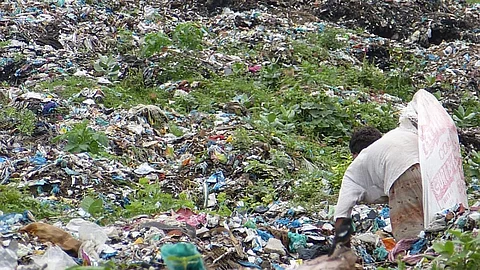
- Topics
- Feature
- Opportunities & Events
- About
- Hindi Portal
- Data
- Topics
- Feature
- Opportunities & Events
- About
- Hindi Portal
- Data

Bihar is working hard to achieve total sanitation. Sanjay Kumar Sinha, of the Public Health Engineerng Department spoke about Bihar's efforts in this direction during a conference on the Right to Sanitation.
He said, "On 02 October 2014, the government launched the Swacch Bharat Abhiyaan which brought changes to the earlier Nirmal Bharat Abhiyaan. The guidelines were released on 18 December and within 5 days, the government of Bihar gave cabinet approval to a scheme of more than Rs 23,000 crore. By 2019, Bihar is slated to become a open defecation free state".
While Bihar's strategy is in the process of being formulated, it is striving to change its focus from that on an individual to that on the community. This is manifested as an engagement with several community-based groups and individuals. Nearly 34,000 Swacchata Doots are entrusted with spreading information about the sanitaition campaign. In addition to individual toilets for every household, there is also a push for one community toilet and a solid-liquid waste management complex within a Panchayat. Considering each Panchayat as one 'project', it is envisioned that the entry point will be motivating the community members and the exit point will be the waste management plant.
Sujith Koonan of the Environmental Law Research Society thinks otherwise. He says, "The problem is that when we talk of sanitation, we approach it from the point of human dignity and safety. These are important issues, but they are also highly individualized. Sanitation is a matter of community health. Within that, dignity and health are embedded".
Looking at sanitation from the point of the individual is detrimental to environmental health and justice. The reason for this is simple, if startling. Koonan pointed out, "Government policies and programmes are often contrary to the concept of the right to sanitation. This is because all toilets function on the principle of covering human excreta and moving it elsewhere. Our concept of sanitation is the transfer of waste, just to shift it from one place to another. In this, we forget about environmental injustice. Waste is always shifted from the localities of the rich to that of the poor, from urban to rural or peri-urban. And this is not just about human excreta, but about all solid and liquid waste".
As for the argument that people need to invest in the disposal of their own waste, he says, "In a democracy, rights do not belong to just those people who can pay for them. We cannot say that if a celebrity takes care of his security by employing private guards, all citizens should do that too. The present trend is one where citizens are taking upon themselves, responsibilities that were once those of the government. The consequence of this action is that rights continue to get diluted".
The right to sanitation is implied in our right to life, in the abolition of untouchability, in equality before law. There are some legal cases where sanitation has been highlighted. There are also several statutes in various laws that concern themselves with sanitation. These include Panchayat laws, water supply and sewerage laws, environmental laws, and laws prohibiting manual scavenging.
The right to sanitation is usually visualised on a very individual level, and further, it is only thought of as individual toilets. Privacy, safety and affordability are all regarded through the lens of toilets. This means that issues such as menstrual hygiene, the needs of disabled people, environmental justice and manual scavenging, to name a few, are all out of sight.
Our attitude still remains that if we see some waste, we begin to think of where we can shift it. It is time we paid attention to how it is being generated. If we do not change our production and consumption methods, this problem will not disappear.